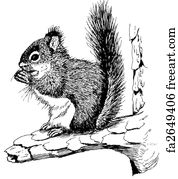Squirrel Gazovie Kotli

Write something about yourself. No need to be fancy, just an overview. No Archives Categories.
Fire-tube (gas-tube) boiler is a copper where fuel combustion materials pass inside heating surfaces pipes, and the water — outside of pipes. They differentiate fire-tube, flue-gas and fire-tube flue-gas boilers. Strictly speaking, Eurotherm coppers are fire-tube flue-gas boilers (although the term “fire-tube boilers”, or simply — “fire tubers”, has got accustomed to coppers of a similar design): there is a heat carrier in a steel plate, while heat transfer happens through fire and flue-gas pipes’ surface.
The Eurotherm copper is a double-thread (reversible) copper: the first copper’s motion is formed by a reverse flue (furnace), flue-gas pipes the second copper convective part’s motion. Copper’s design In terms of design the boiler represents horizontally located combined and welded cylindrical construction consisting of an outer mold mine — the boiler’s case (pos.1 in figures 1 and 2), a hub with the bottom — boiler’s furnace (pos.2 and pos.3) and flue-gas pipes (pos.4) welded with front and back pipe walls (pos.5 and pos.6).
Construction is located on a mounting frame (pos.16). The internal cavity formed by boiler’s case and furnace is its hydraulic circuit (pos.7).
You will always get the same price as offered by the manufacturer, including sale prices, whether it has been updated here or not. Download varahamihira astrology software.
The bundle of flue-gas pipes is located in hydraulic path’s cavity. The coolant’s addition and discharge– water is carried out through the ” reverse T2 water” (pos.8) and “direct T1 water” (pos.9) branch pipes, located on the boiler case’s upper generatrix. There is also the safety valves mounting branch pipe (branch pipes) is located on the boiler’s case upper generatrix. The guide path is located in water path’s cavity provides heat carrier’s flow to a heat-stressed leading pipe wall. Copper’s design • 1-copper’s case • 2-copper’s furnace (fire-tube pipes) • 3-furnace’s bottom • 4-flue-gas pipes • 5-forward pipe wall • 6-back pipe wall • 7-copper’s water path • 8-coolant’s addition branch pipe (T2) • 9-coolant’s discharge branch pipe (T1) • 10-the furnace door • 11-ready-made flue-gases container • 12 flue-gases branch pipe • 13-heat-proof concrete • 14 security valve installation arrangement branch pipe • 15-heat insulation • 16-mounting frame • 26-boiler’s furnace • 27-decontamination gateway server • 28-“the reverse water” guide path. The inner mold mine’s cavity with the bottom forms the deadlock type furnace camera. The smoke fumes return to a door from the bottom and pass inside flue-gas pipes (pos.4) where vortex generators are set (pos.17) while turning, come into smoke fumes’ case (pos.11) and removed into atmosphere through a branch pipe from there.
The furnace door (pos.10) is hung from the boiler case’s front side of on special loops (pos.21). Loops provide door’s opening, both to the left, and to the right, as well as reliable multiplexing inhaling possibility.

From a furnace’s side The door is protected by heat resisting concrete (pos.13) isolation plate, while playing the role of smoke fumes’ titling chamber upon their transition from boiler’s furnace to flue-gas pipes. The sealing cord groove (pos.24) is placed on the door’s perimeter. The door is equipped with an observation port (pos.18) and burner installation embrasure (pos.19). The smoke fumes’ case is attached to case’s back pipe wall on pins and has the multiplexing similar to that of a furnace’s on perimeter. The decontamination gateway server (pos.27) is located in the lower part of a box when cleaning gas flues. The boiler’s furnace, the furnace’s door hung on loops of a front pipe grid, flue-gas pipes and combined smoke fumes’ case fixed onto back pipe wall form the boiler’s gas path. Figure 2. Copper’s main element disposition.